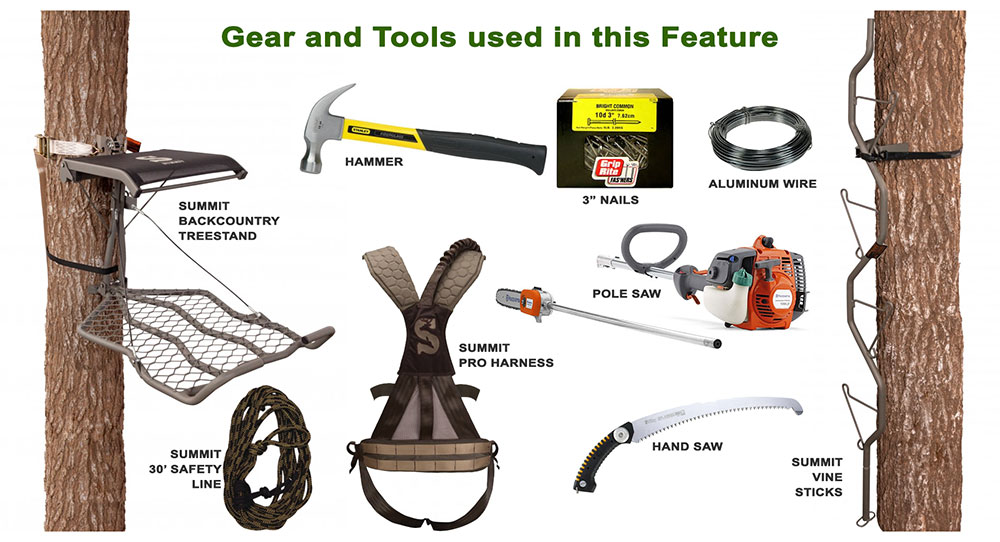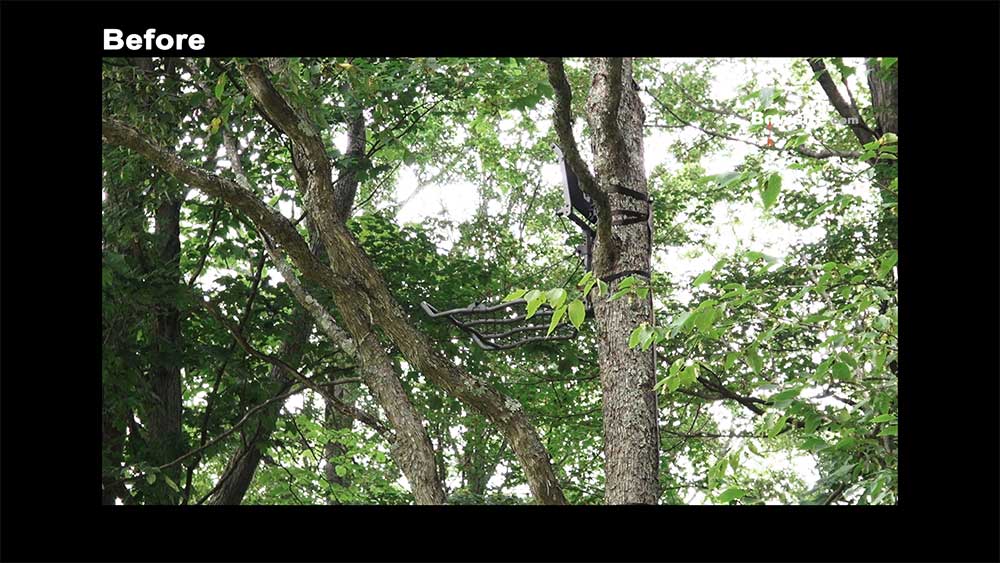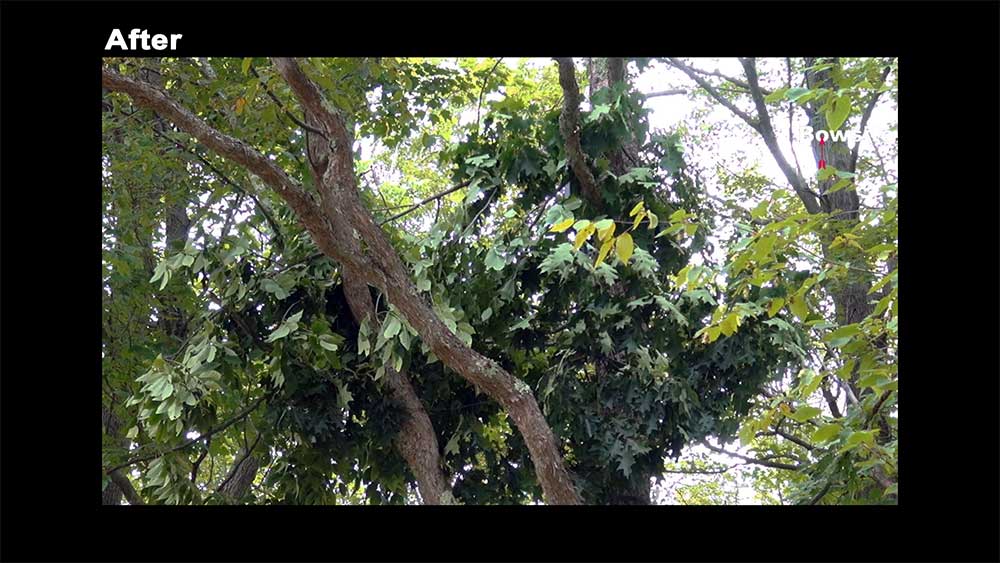Stop Exposing Yourself (to whitetails)
This simple treestand trick is hardly ever used but it can mean the difference between a buck on the wall or a painful memory

You've done your scouting and have identified the most perfect treestand location you could ever dream up. So you hang your fixed position stand and a few weeks later the buck you've been waiting for walks in. He looks up at you...and bolts. You have company. Lots of bowhunters have the same problem - they are unnecessarily exposing themselves.
Fear not. With a few extra tools - and just one additional hour - that buck would feed right past that stand and never know you're there. That is, until your arrow slips between his ribs. It's the simple act of brushing in your stand and it's something many advanced bowhunters do every year. Yet, while the process is incredibly simple, very few whitetail hunters actually do it. Perhaps they are still under the ridiculous notion that deer don't look up? Well, I'm here to tell you that they do, and it is usually at the worst possible moment.

My Tools and Gear List
- Summit Backcountry Stand
- Summit Vine Sticks
- Summit Harness and Lineman's rope
- Summit 30' Safety Line
- Pole Saw (power or manual)
- Hand Saw
- Hand Clippers
- Aluminum Wire
- 3" Bright common nails
- A helper - (highly recommended)
Safety First
You are going to be doing all of this from 20' up in the air, so be sure you are secured the entire time. I will not do any of this without first attaching my Summit Safety Harness with a lineman's rope and a 30' safety line. Some of this may require some contorted positions so I can't stress the use of proper safety gear strongly enough.
Process: Brushing-in your treestands
If you are blessed with mature evergreen trees then simply hang your stand and you're done. If you are like the rest of us, you are likely hanging your stands in mature hardwood trees with little cover. This is especially true in the Northeast and mid-Atlantic states. Every tree I hunt from is a mature hardwood with almost no cover. So rather than letting a perfect tree location go to waste, I budget 60-90 extra minutes during the preseason to brush in the stand.
Now this part is important; timing matters. You will need to cut live limbs from surrounding trees and their leaves must be green. Green leaves will die with the cut limb and will stay connected long after all the live limbs have dropped their leaves in the fall. I can get an entire season out of one brushed in stand before the leaves begin to shed. I seek out oaks, maples, hawthorns and beech tree limbs 8-10' long and at least 6-8' wide. This is just my own personal preference. Some hunters prefer smaller limbs and use more of them. I find that the bigger, wider limbs keep their surface area better than the smaller ones as there will be some inevitable shrinkage after the limb dies back.
I pull the limbs up onto the treestand with my hoist rope and then I nail the butt end of the limbs to the tree, then another nail or two to lock in the position. I've found 3" bright common nails to work quite well for this. While nails work great for the thicker, butt ends of the branches, they won't work for the leafed out sections on the other end. For that I use aluminum wire to help flare out and secure the brushy cover. You do not want the branches pivoting and flopping around up there in a breeze so wire them down.
Important note: check the regulations. Many State lands have laws that prohibit cutting limbs and placing nails in trees. On private land, be sure to check with the landowner first before making any modifications as well.


Testing the setup
Once you're happy with the cover provided, sit in the stand and imagine the shot locations and holes you will be shooting through. Make sure your bow is not obstructed and you have maneuverability from your little birds' nest. This is where the clippers come in. I will fine tune the setup one last time before I leave the area. I will also bring my clippers with me when I show up for hunting the first time. Branches, wires and nails may shift and you may need to tweak that setup one last time now that the branches are dead and their leaves dried up. After that, you should be good to go.
What about thieves?
While this was not a concern on our land, it may be on property you hunt. Making your treestand less obvious to criminal scumbag thieves has no downside. Spending time breaking up the outline of your stand and camouflaging it inside of brush is definitely going to reduce the opportunity for theft or vandalism. This was also one of the design goals by the Summit engineers when they created the Vine sticks and Back Country hang on.
To many people reading this, I'm sure this small step seems incredibly obvious. But I can count on one hand how many hunters I've met in 35 years that actually does this. Or worse, outfitters. You may find it to be the best hour you've ever spent!




